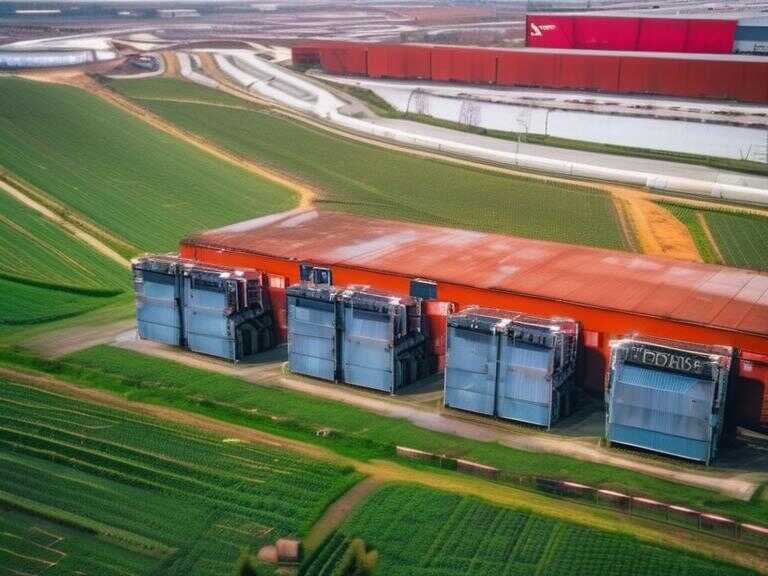
Tornado Outbreak Linked to Hurricane Milton Causes Death and Destruction in South Florida
Hurricane Milton caused severe tornado outbreaks in Florida, resulting in significant damage and loss of life, marking one of the state's worst tornado incidents.

In a shocking turn of events, Hurricane Milton unleashed a devastating tornado outbreak in Florida, resulting in widespread destruction and loss of life. The powerful storm spawned multiple tornadoes, with one of them becoming one of the strongest in the history of South Florida.
On the day the hurricane struck, the National Weather Service issued a staggering 126 tornado warnings, and reports indicated a total of 45 preliminary tornado sightings across the state. The most tragic incident occurred in St. Lucie County, where a tornado tore through a retirement community, claiming the lives of five individuals. This tragic incident accounted for nearly a third of the 17 fatalities attributed to the hurricane at that time.
Unprecedented Tornado Outbreak
The impact of the tornado outbreak was profound, as it emerged as a leading cause of death and destruction in Florida, a state typically accustomed to tropical storms but less familiar with such powerful tornadoes. The damage wrought by the tornadoes is likely to be recorded as one of the worst outbreaks in Florida's history during a cyclone. The intensity of the tornadoes was underscored by estimated wind speeds reaching an astonishing 140 mph in Palm Beach Gardens, causing severe destruction to newly constructed homes, leaving concrete walls torn apart and roofs devoid of large sections.
Historical Significance
This unprecedented event marked the first recorded EF-3 tornado in the South Florida area, as noted by Donal Harrigan, a meteorologist at the National Weather Service in Miami. The Enhanced Fujita (EF) Scale categorizes tornadoes based on their estimated wind speeds, with EF-3 tornadoes ranging from 136 to 160 mph. Harrigan indicated that it is possible that several other observed tornadoes may also be classified as EF-3s after further assessment of the damage. He emphasized the historical significance of this occurrence, highlighting the rarity of EF-3 tornadoes in the state and the potential for multiple such occurrences within a single day.
Aside from the immediate impact on Florida, the tornado outbreak is reflective of a broader trend in the United States, where an alarming number of intense tornadoes associated with hurricanes have been reported this year. Tornadoes are a common occurrence during hurricane landfalls, but typically, they are of a weaker nature. However, this year, four out of five hurricanes that made landfall in the U.S. generated EF-3-intensity tornadoes, defying the historical pattern. Between 1995 and 2023, only five tornadoes produced by tropical storms were rated as high, making the surge in EF-3 tornadoes this year particularly noteworthy.
Potential Climate Change Influence
As investigations into the factors contributing to the tornado outbreak continue, early research has suggested a potential correlation between tropical cyclones and climate change, indicating that rising temperatures could lead to an increased frequency of tornado-producing storms. A study published in June modeled hurricanes Ivan, Katrina, Rita, and Harvey in a hypothetical warmer climate and projected a possible increase of 56% to 299% in the number of potentially tornadic storms produced by tropical cyclones by mid-century, assuming current levels of fossil fuel pollution persist. However, it remains uncertain whether climate change played a direct role in this year's storm-related tornadoes.
Unusual Conditions
Bill Gallus, a professor of meteorology at Iowa State University and one of the authors of the aforementioned study, noted the unusually unstable conditions in South Florida during Hurricane Milton. Conditions are considered unstable when variations in density and temperature allow for rapid ascension and descension of air pockets, creating an environment conducive to thunderstorms. Gallus expressed astonishment at the instability levels observed, likening them to those typically seen in storm-prone areas like Kansas. He emphasized the unprecedented concentration of tornadoes in Florida, suggesting that a warming climate may contribute to the emergence of such conditions more frequently in the future.
Uncharacteristic Tornado Formation
One of the distinctive features of the tornado outbreak was the formation of tornadoes far from the hurricane's center. Gallus explained that the initial tornadoes originated from a band of showers and storms emitted by Hurricane Milton, which extended further from the storm's core than typically observed. This isolated band of thunderstorms, unhindered by other systems, served as the breeding ground for the tornadoes, highlighting the multifaceted threat posed by hurricanes, extending beyond their immediate vicinity and the point of landfall.
Heat and Wind Shear
Another critical factor contributing to the prolific tornado production was the combination of heat and wind shear. As Hurricane Milton approached the Florida coast in the afternoon, the outer thunderstorms encountered exceptionally warm conditions, coupled with changes in wind direction and speed at higher altitudes, creating an environment primed for the development of powerful storms. Gallus noted that this unusual interplay allowed the tornadoes to surpass their typical strength, complicating predictions based on conventional hurricane behavior.
Concentration of Tornado Outbreaks
Gallus further highlighted the geographic concentration of the tornadoes, attributing it to Hurricane Milton's brief passage across the Florida peninsula. He suggested that the small area impacted by the tornadoes was remarkable, categorizing it as one of the most concentrated outbreaks of tornadoes induced by a hurricane. This concentration adds a layer of complexity to understanding the storm's impact, as the affected regions bore the brunt of an unprecedented meteorological event, challenging established paradigms of hurricane-related tornado formation.
Wider Implications
The ramifications of the tornado outbreak extend beyond immediate destruction and loss of life. It underscores the need for enhanced understanding of the interplay between climate change and extreme weather events, particularly the relationship between rising temperatures and the frequency and intensity of tornado-producing storms. Furthermore, the concentration of tornadoes in a relatively small geographic area raises questions about the adequacy of existing preparedness measures and response protocols in the face of evolving meteorological patterns.
Global Warming Impact on Extreme Weather
While the direct influence of climate change on the tornado outbreak remains a subject of ongoing investigation, its impact on other aspects of weather patterns has been more definitively established. A report from the World Weather Attribution project indicated that intensified rainfall in one-day events, such as those associated with Hurricane Milton, is now 20% to 30% more pronounced due to climate change. Additionally, the analysis suggested a potential 10% strengthening of wind speeds associated with such events attributed to climate change. These findings point to a broader trend of climate change exacerbating the severity and intensity of extreme weather events, necessitating a comprehensive reevaluation of preparedness and response strategies.
Share news















